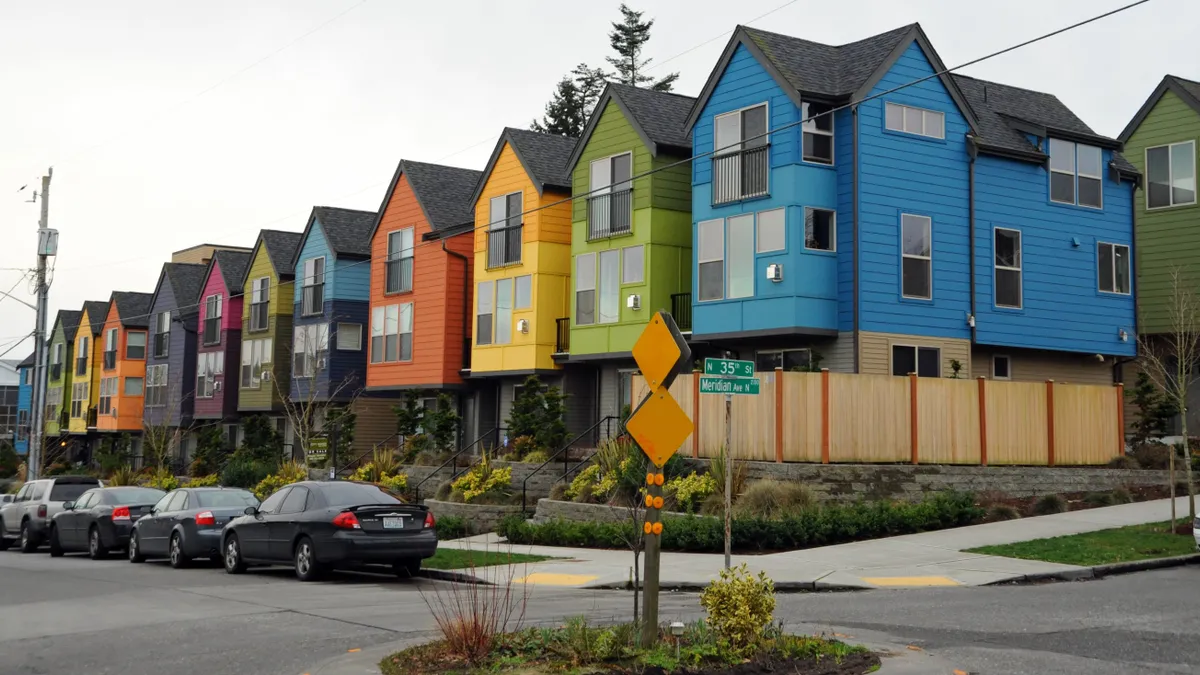Dive Brief:
- A new report from the U.S. Government Accountability Office (GAO) examined homeownership trends in nine major cities from 2010 to 2018, in a bid to understand how the Great Recession (2007-2009) impacted urban expansion and the general housing market.
- The report found the national homeownership rate peaked around 70% before the recession, then dropped to a 30-year low of 63% in 2016. "Seven percent may not seem like a lot, but that's a big shift," said Dan Garcia-Diaz, managing director of financial markets and community investment at GAO. "A lot of progress was wiped away."
- Across the nine cities, GAO found that average home prices grew; homeowners and recent borrowers were increasingly older, wealthier and more diverse; homeowner vacancy rates indicated "growing constraints on the housing supply"; and most cities expanded outward to some degree.
Dive Insight:
The novel coronavirus (COVID-19) pandemic has resulted in a wave of financial turmoil expected to have as significant, if not worse, economic impacts as the Great Recession.
While this GAO report examined homeownership trends through 2018, far before COVID-19 washed over the U.S., it highlighted the housing trends U.S. cities will likely face when the virus is eradicated. Those trends will "hinge on how long this pandemic lasts and the resulting disruption to the economy and the labor markets," Garcia-Diaz said.
The biggest questions right now center on which policies will be implemented to ensure stability in the market and if those policies will be able to spur sufficient growth in housing to accommodate growing populations, he said. Factors like shifts in populations — as some city dwellers skip town to avoid high costs of living — could impact housing markets, he said, though GAO has not closely analyzed data on recent migration patterns.
The GAO report found an increase in pre-COVID homeownership rates among different racial and ethnic groups. Chicago, Houston and Washington, DC showed 2-3% increases in Hispanic homeowners from 2010-2018, while San Francisco saw an estimated 5% increase in Asian homeowners. Yet none of the analyzed cities showed a significant increase in the percentage of Black homeowners.
To address wealth disparities between Black and White communities, the housing market must present more opportunities for Black families to own homes, Garcia-Diaz said.
"Yes housing is shelter, it's a place to raise a family, it’s a place to live and sleep and eat, but it's also a source of wealth for folks in their retirement years," Garcia-Diaz said. "As we think about homeownership, we want to think about sustainable homeownership — that people can actually continue to pay and live and maintain their properties — but we also have to think about how it is an important source of wealth."












